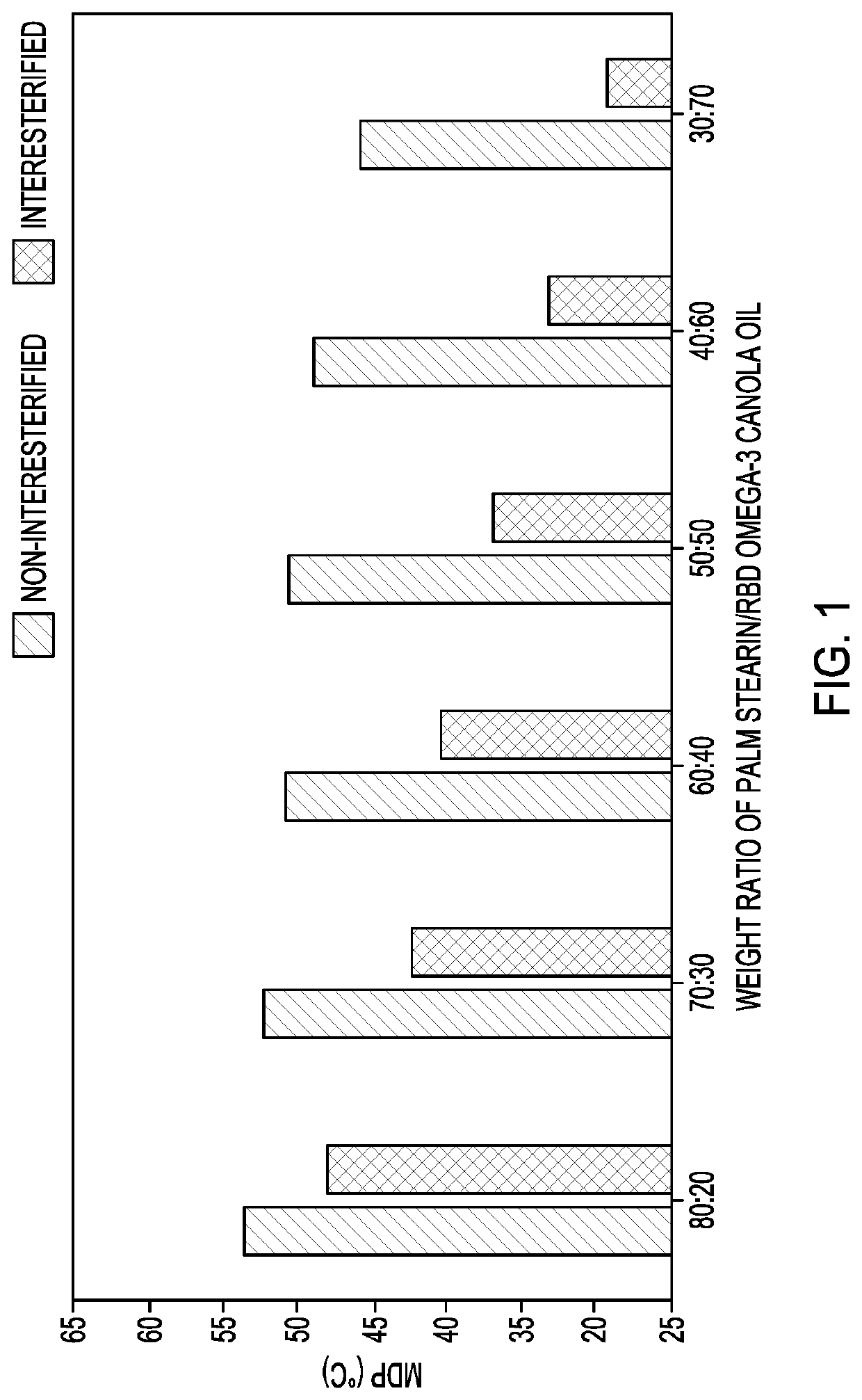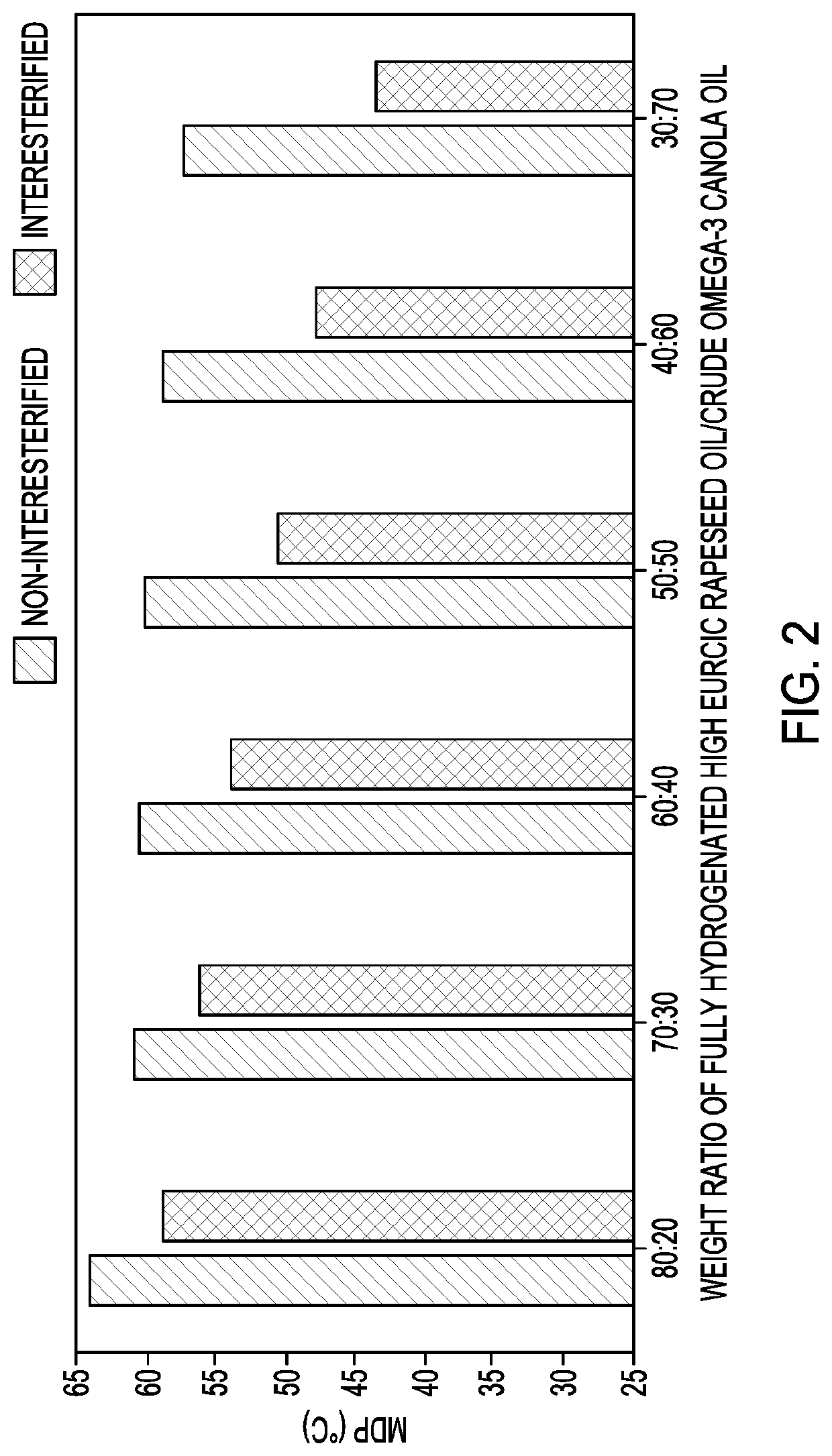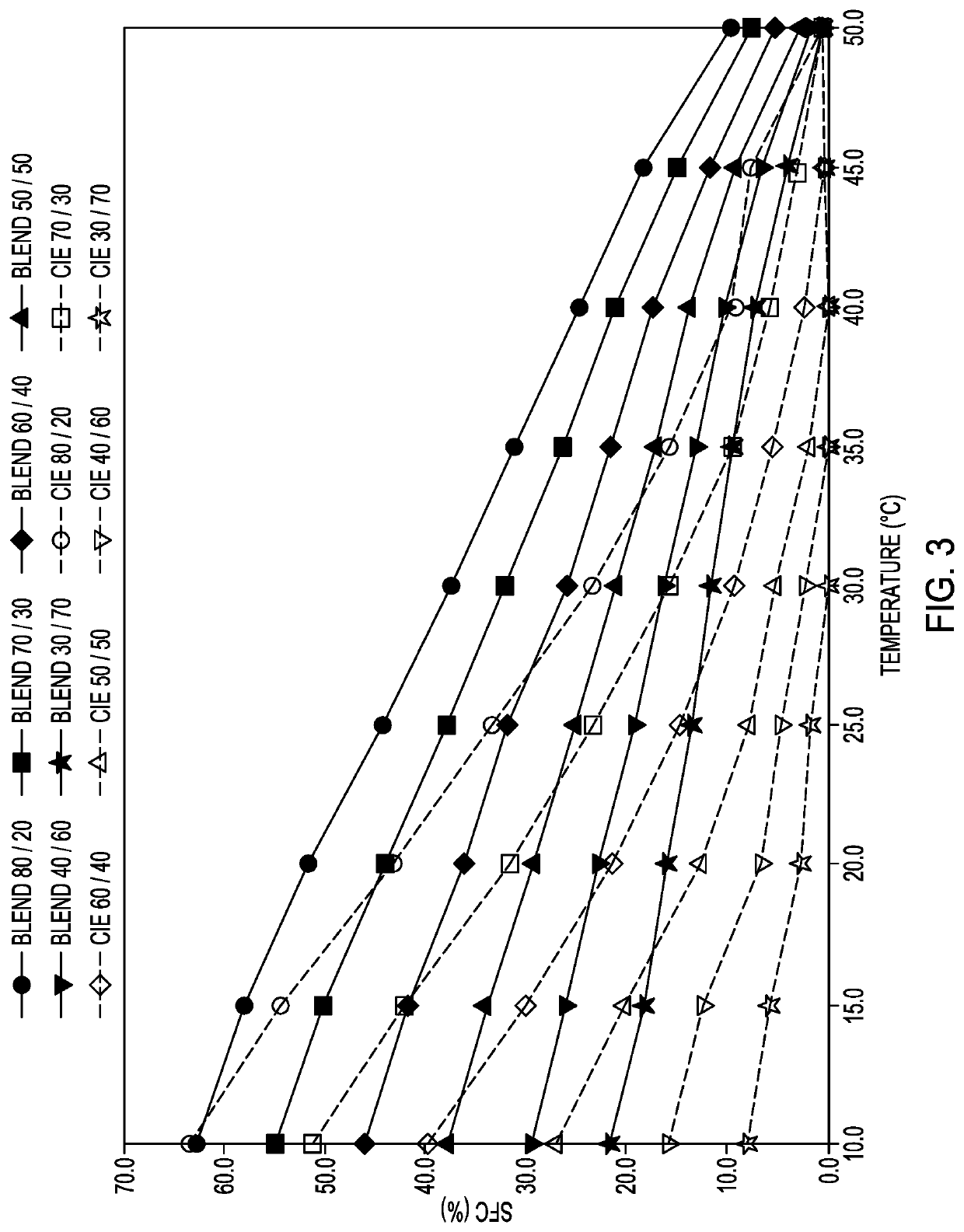Modified Triglyceride Including Omega-3 Fatty Acid Residue
a technology of triglyceride and omega-3 fatty acid, which is applied in the field of modified triglyceride including omega-3 fatty acid residues to achieve the effects of reducing solid fat content, reducing melting point and improving digestibility
- Summary
- Abstract
- Description
- Claims
- Application Information
AI Technical Summary
Benefits of technology
Problems solved by technology
Method used
Image
Examples
example 1
Interesterification of Samples 1-6
[0059]Chemical interesterification. 100 g of blends were added to a 500 mL round bottom flask and dried under vacuum at 95° C. for 30 min. Sodium methoxide (0.2-0.6%, w / w) was then added to the flask as a catalyst. After 30 min of stirring at 700 rpm at 95° C. under vacuum, water was added to the flask to deactivate catalyst and terminated reaction. Subsequently, the interesterified mixture was separated in a jacketed separatory funnel and washed several times with hot water (about 70° C.) to remove deactivated catalyst derivatives and soaps formed by the reaction between sodium ion and free fatty acids present in the reaction. After drying under vacuum, the interesterified mixture was bleached with 1% bleaching clay and 1% Trisyl® silica at 95° C. under vacuum for 30 min Finally, the chemical interesterified products were obtained after filtration.
example 2
ropping Point (MDP)
[0060]The Mettler dropping point of a sample is the temperature at which the first drop falls or flows out of the opening of a standardized sample cup. It was determined according to American Oil Chemists' Society (AOCS) method Cc 18-80.
[0061]The MDPs of interesterified and non-interesterified blends of palm stearin and RBD omega-3 canola oil, and of fully hydrogenated high erucic rapeseed oil and crude omega-3 canola oil, are shown in FIGS. 1-2. The interesterified products had decreased MDPs compared to non-interesterified blends at all ratios. This can be explained by the decrease of higher-melting trisaturated triglycerides after interesterification. With an increase of content of palm stearin or fully hydrogenated oil in the blends, the MDP of the interesterified products increased. At the same weight ratio of oil blends, interesterified products of fully hydrogenated high erucic rapeseed oil and crude omega-3 canola oil demonstrated higher MDP than intereste...
example 3
Content (SFC)
[0062]Solid fat content in samples at temperatures of 10° C., 15, 20, 25, 30, 35, 40, 45, and 50° C., was determined using Nuclear Magnetic Resonance (NMR) spectrometry according to AOCS method Cd 16b-93.
[0063]FIGS. 3-5 illustrate SFC curves of interesterified products and their blends as a function of temperature. FIG. 3 shows solid fat content (SFC) of interesterified products and initial blends of palm stearin and RBD omega-3 canola oil as a function of temperature. FIG. 4 shows solid fat content (SFC) of interesterified products and initial blends of palm stearin and crude omega-3 oil as a function of temperature. FIG. 5 shows solid fat content (SFC) of interesterified products and initial blends of fully hydrogenated high erucic rapeseed oil and crude omega-3 canola oil as a function of temperature. It was observed that interesterification tended to result in decreased SFC for all blends at all temperatures. Generally, at a lower temperature (e.g., 10° C. and 15° C...
PUM
 Login to View More
Login to View More Abstract
Description
Claims
Application Information
 Login to View More
Login to View More - R&D
- Intellectual Property
- Life Sciences
- Materials
- Tech Scout
- Unparalleled Data Quality
- Higher Quality Content
- 60% Fewer Hallucinations
Browse by: Latest US Patents, China's latest patents, Technical Efficacy Thesaurus, Application Domain, Technology Topic, Popular Technical Reports.
© 2025 PatSnap. All rights reserved.Legal|Privacy policy|Modern Slavery Act Transparency Statement|Sitemap|About US| Contact US: help@patsnap.com



